Lambrou Pens Psaróvarka Prototype 2010
by Jim Mamoulides, July 26, 2024
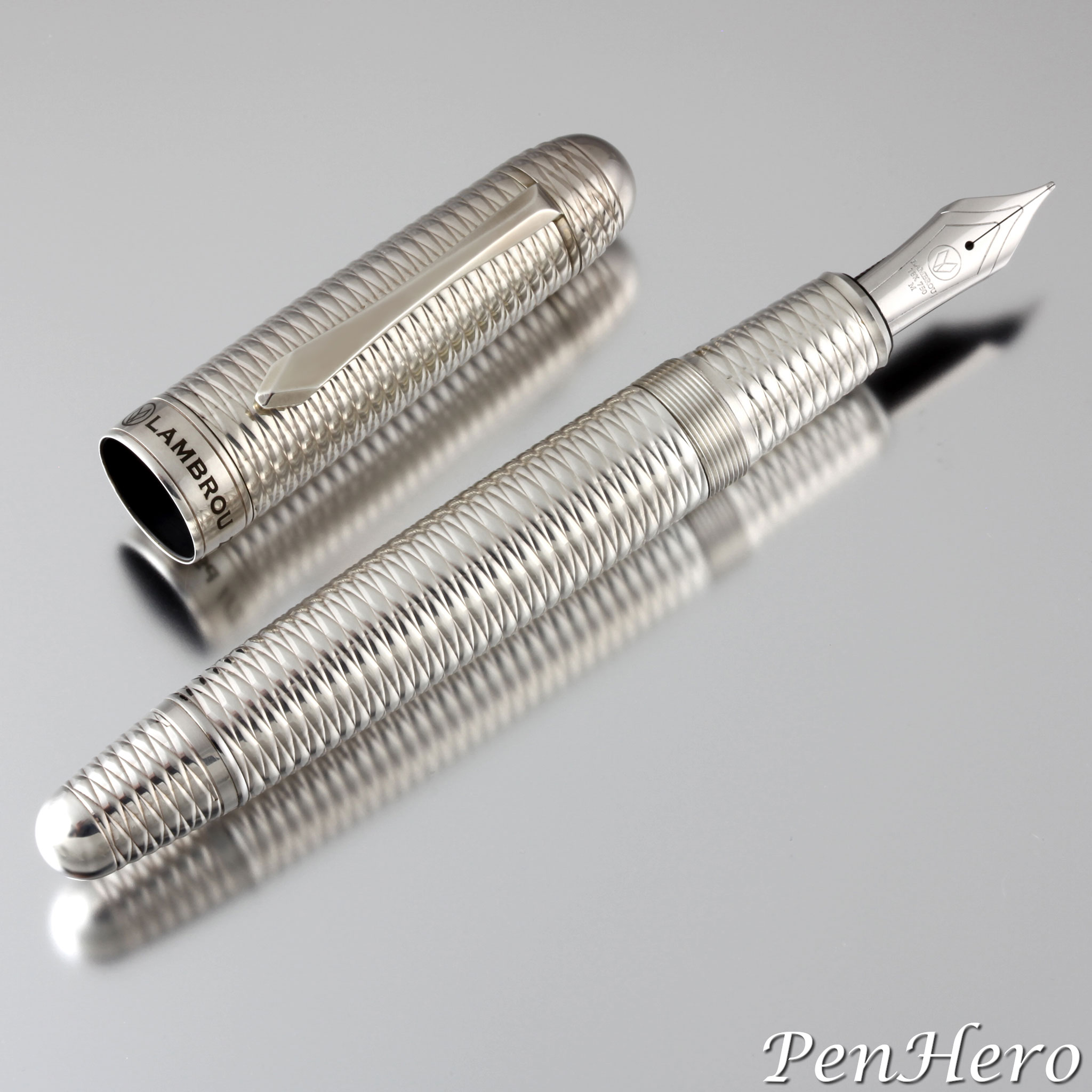 Lambrou Pens Psaróvarka prototype fountain pen 2010
Lambrou Pens Psaróvarka prototype fountain pen 2010
A Search for a Successor to the CP8
The Classic Pens CP8 Flamme and Vannerie were released in 2008, a pair of sterling silver pens decorated with deep guilloche engraving on the cap, barrel, and extending out to the cap and barrel ends. The Flamme was decorated with a continuous wavy flame pattern and the Vannerie with a French basketweave pattern. There were 250 of each pen made, with the option of fine, medium, broad and broad italic 18 karat gold Bock nibs or a self-contained rollerball front end unit that accepted Parker style ballpoint or liquid ink cartridges. The Legend 766L base pen, with its sterling silver cap, barrel, and trim pieces was made by Aquila Brands of Italy, the nib by Peter Bock of Germany, and engraved by R. Murelli of France.
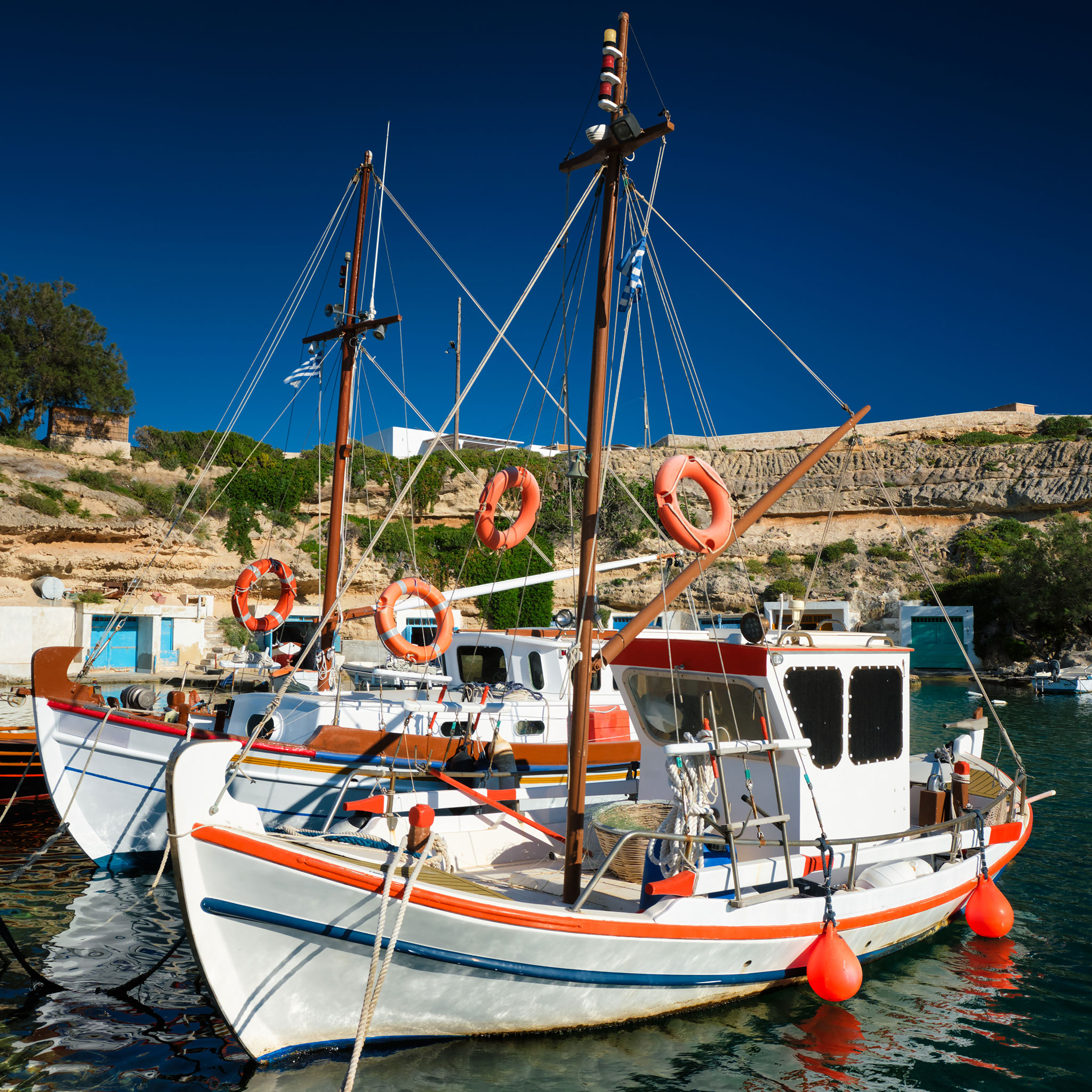 Greek fishing boats, Freepik image
Greek fishing boats, Freepik image
The CP8 sold well, and plans were made for a follow up pen using the Classic Pens Legend 778L as the base. Changes from the CP8 would include a guilloche engraved grip section instead of black plastic and a hand crafted sterling silver clip instead of a stamped and plated brass clip. There were seven guillochage prototype designs being considered, drawing inspiration from the psaróvarka, Greek for a small fishing boat, vuono, Finnish for fjord, edafos, Greek for foundation or terrain, Parisienne, a crosshatch guillochage, phalanx, a formation of heavy infantry, stroma, a heavy and wide crosshatch, and thallassa, a Greek name for the daughter of Aether and Hemera, the female personification of the Mediterranean sea. Prototyping work began in 2010 and examples of each were made in either sterling silver or plated brass. I saw the first photos of the samples in October of 2010.
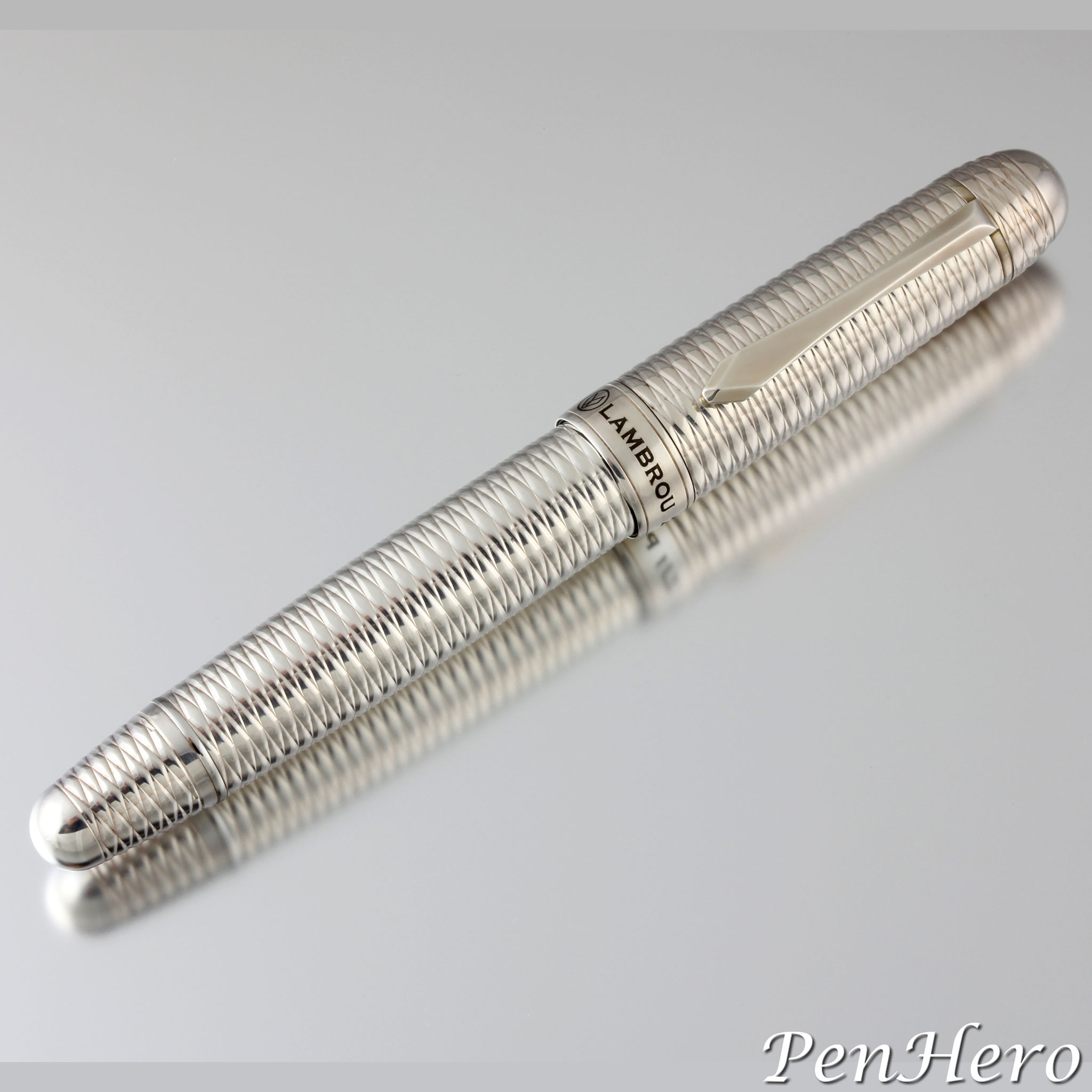 Lambrou Pens Psaróvarka prototype fountain pen 2010
Lambrou Pens Psaróvarka prototype fountain pen 2010
This prototype is the Lambrou Pens Psaróvarka or ψαρόβαρκα in Greek. It was made in 2010 using a brass Legend 778L as the base for the guillochage work. Psaróvarka or ψαρόβαρκα is a Greek word used for small fishing boats, and the deep engraving, with its broad braided look, evokes the heavy corded nets and ropes used on them. Like the CP8, it’s a 6 inch long cartridge/converter fountain pen. The R. Murelli Company used a modern circular engraver to complete the guillochage work. The finished pen was then coated with 5 microns of silver plate to provide an example of how it would look in sterling silver. Like the CP8, the engraving extends past the clip and also to the round end of the barrel. The clip is a hand crafted sterling silver piece by Paul Rossi. The nib is a G-380, 18-karat gold nib unit with ebonite feed by Peter Bock and is rhodium plated to compliment the sterling silver clip and trim.
R. Murelli and Guillochage
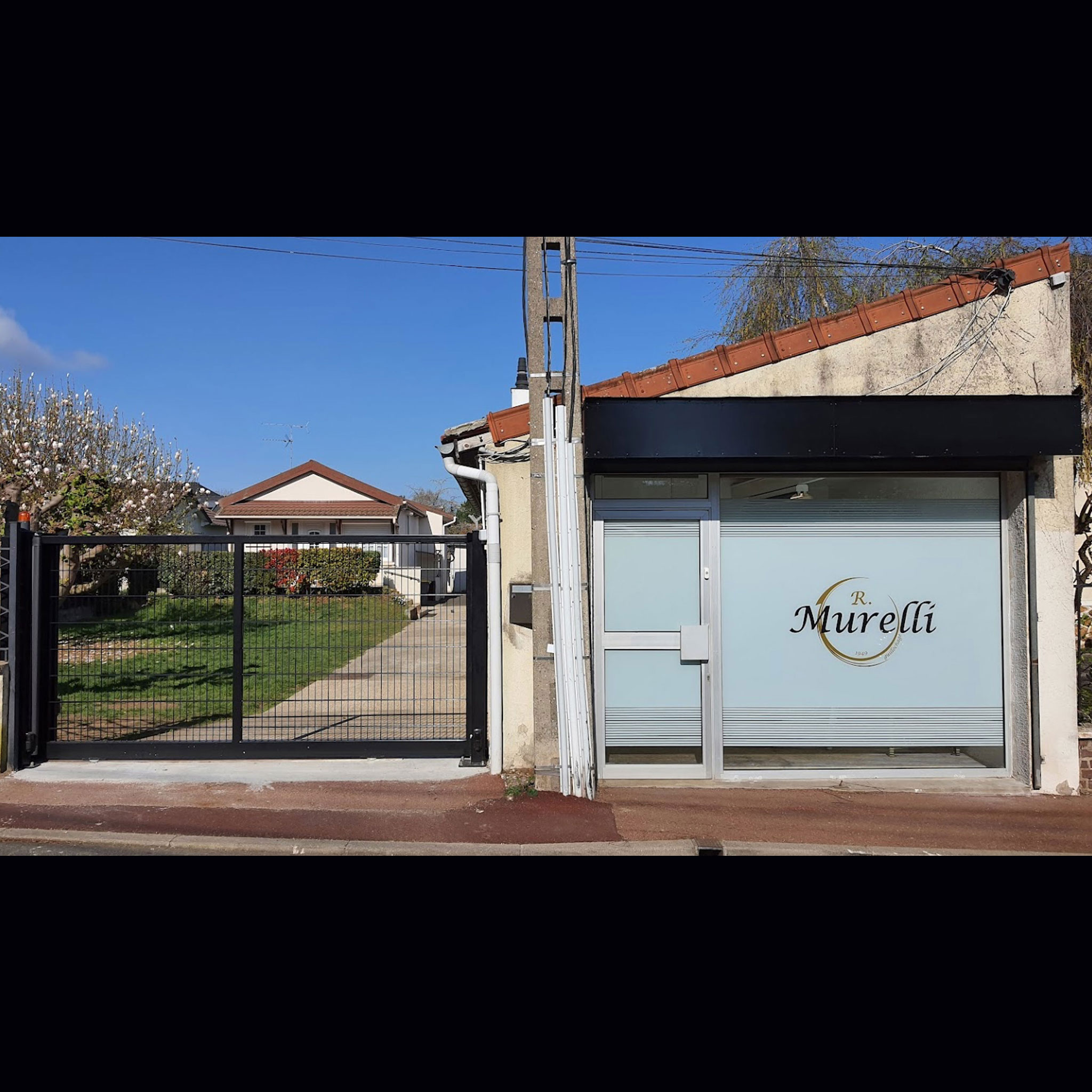 R. Murelli workshop, Google Maps image
R. Murelli workshop, Google Maps image
R. Murelli is an independent, specialty guillocheur workshop located in a long, narrow building in a residential area of Domont, France, a commune in the Île-de-France region, about 25 kilometers north of Paris. R. Murrelli was established in 1949 by Robert Murelli and the company describes themselves as, “the only independent craftsmen specializing in guillochage in France. Often required to design and manufacture their tools themselves, mixing work on old machines, carefully preserved and maintained, and on more specialized digital equipment.”
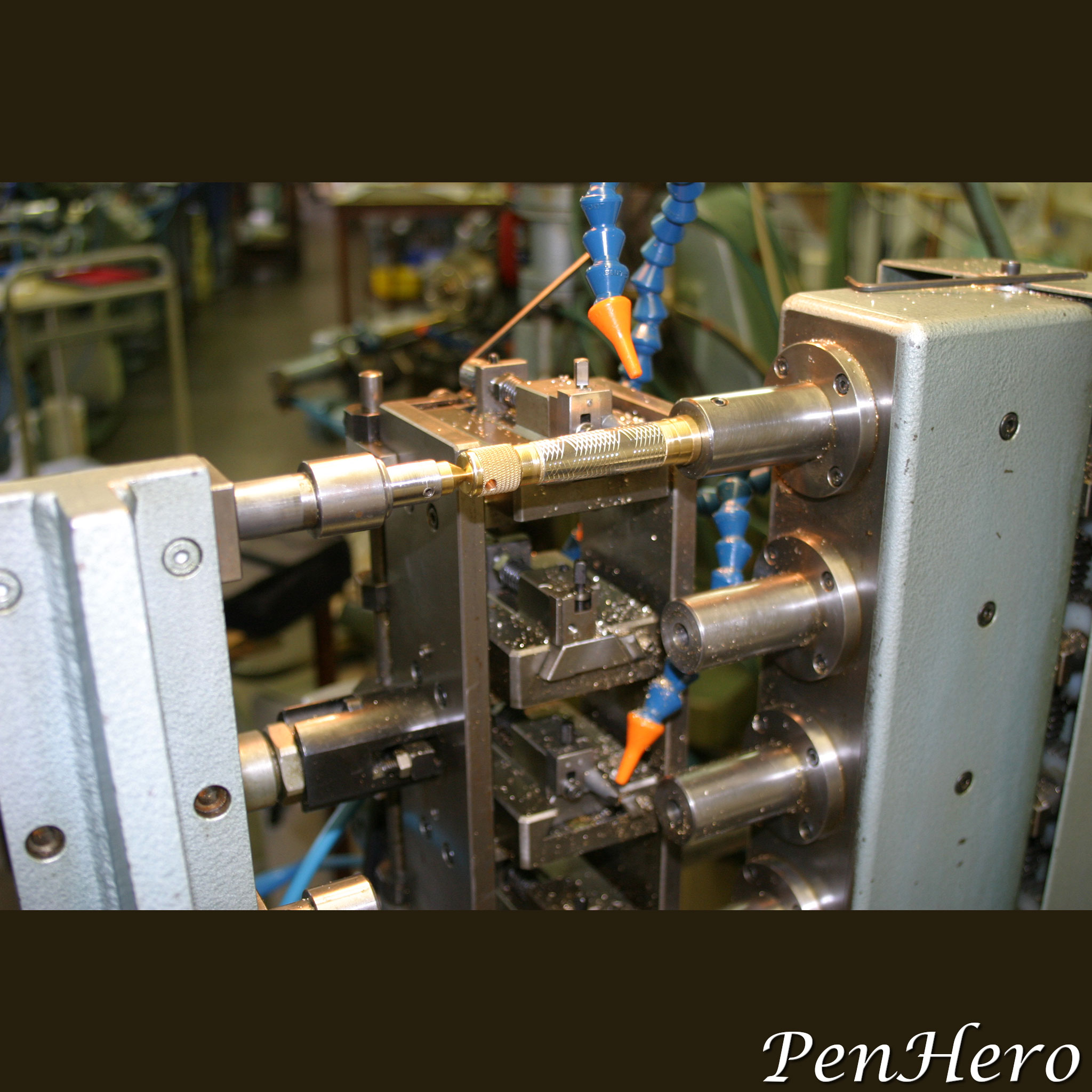 An R. Murelli engraving machine
An R. Murelli engraving machine
The company defines guillochage as “a process of decoration by removing material, on different materials and supports in historical sectors of luxury such as writing, goldsmithing, jewelry, watchmaking and leather goods, but also in diversified and high-end sectors such as tableware, taps, electrical equipment, automobiles, and many others.” They trace the history and name of guillochage to “a worker named ‘Guillot’ who would have ‘invented it’, consisting of tracing decorations on materials by removing material.” The story is that Guillot was an 18th century French worker who invented a pedal operated engraving machine that could do specialty work such as interlaced curves, ideal for decorating watch parts.
Psaróvarka
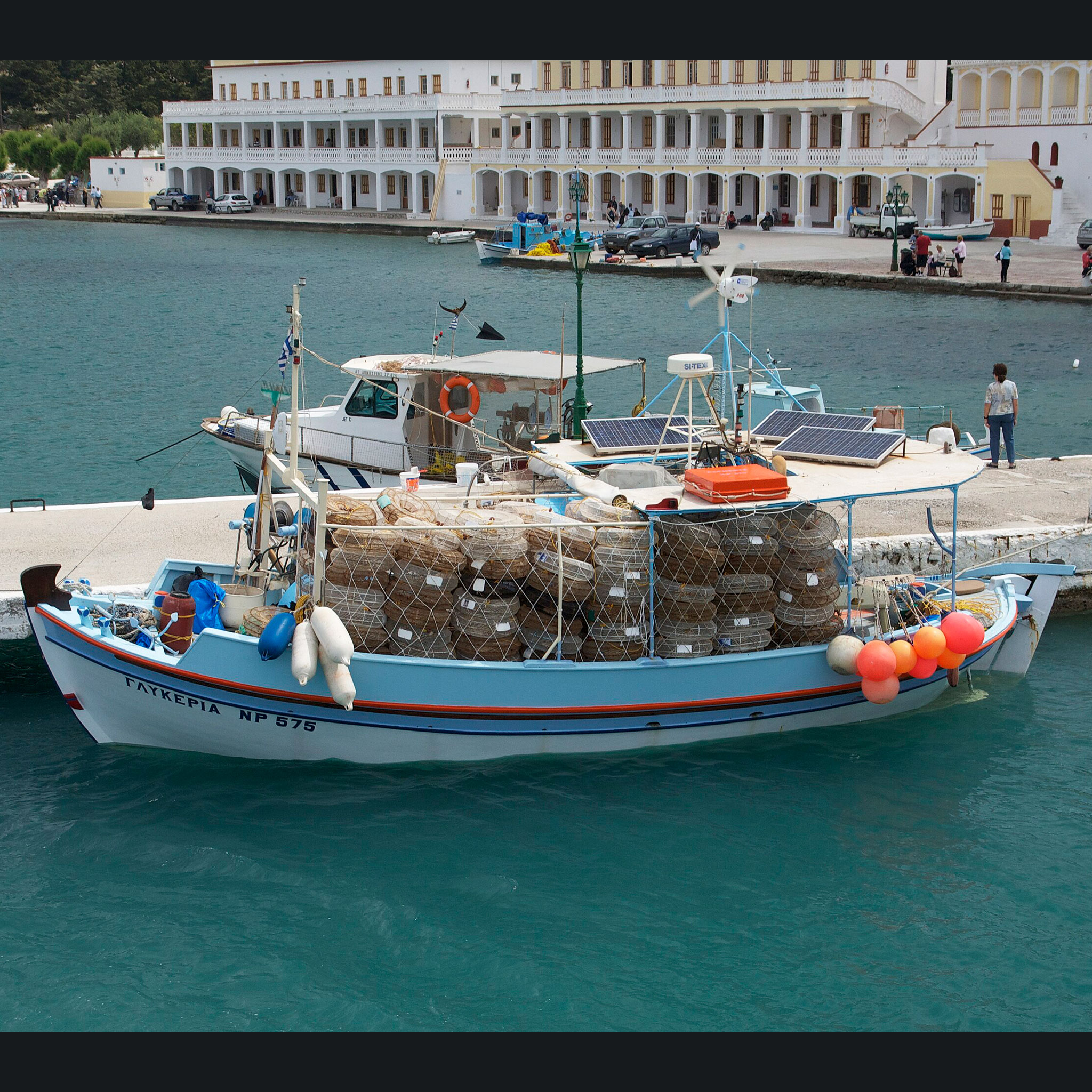 Greek fishing boat, Google images
Greek fishing boat, Google images
Psaróvarka or ψαρόβαρκα is Greek word for small fishing boats, and the deep engraving evokes the heavy cords used for the nets and ropes found on them. Traditionally these are craft made small wooden vessels, ranging from eight to fourteen meters, painted in white and bright colors chosen from the local culture, and many are complete with sails. Also called kaiki, there once were thousands of them, many fishing with strong braided rope lines, traps, and nets, the inspiration for the engraved design. Braided rope is very strong and can be rewoven if torn or broken, making it highly valued.
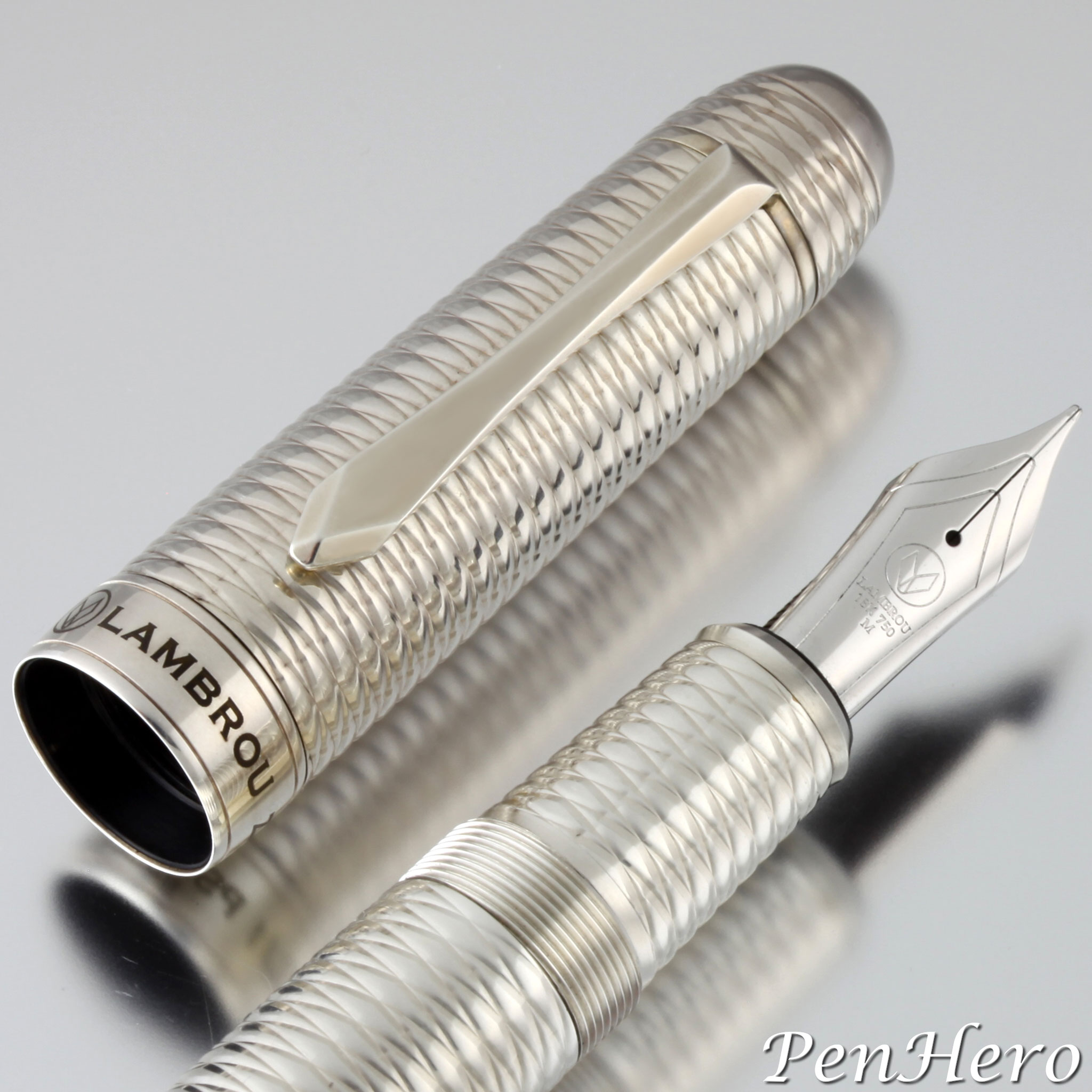 Lambrou Pens Psaróvarka prototype fountain pen 2010
Lambrou Pens Psaróvarka prototype fountain pen 2010
I’ve only seen this one Psaróvarka prototype, so it may be unique. There was discussion of making one or two more in sterling silver, with palladium plating and/or no plating, like the CP8. I don't know if they were ever made. The heavy look of the design on the hefty wide pen body certainly does justice to the braided rope subject. It is an impressive pen and would have made a nice CP9.
References
What is "guilloché"?, Laguiole Fontenille Pataud, Thiers, France
Interact
Comments on this article may be sent to the author, Jim Mamoulides


